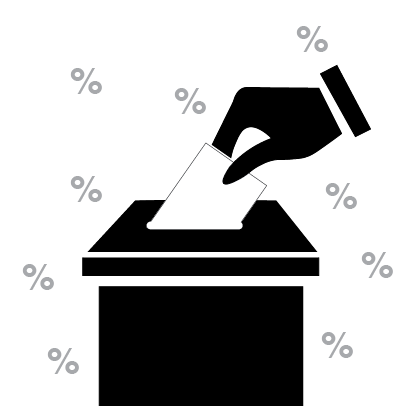When we talk women’s rights within a religious context, Islam is not the first to come to mind.
When the conversation further proceeds to women’s rights in Islam, Islam is often stereotyped to be a violent, hateful and misogynistic faith, in which women are victims to the oppression of religious patriarchy. While most would think this two-dimensional perception of Muslim women chiefly comes from Islamophobic bigots, it can be found within feminism as well.
This narrow-minded perception of Muslim women and feminism is exemplified within feminist columnist, Joumana Haddad’s claim that a Muslim feminist is contradictory and therefore cannot be considered legitimate.
“You are either a Muslim, or a feminist,” Haddad said in a blog post. “Islamic feminism is a delusion, a misconception and an oxymoron, again. Islam and feminism cannot be compatible by any stretch of imagination.”
Haddad isn’t alone in this feminist exclusion of Muslim women.
Radical feminist group, Femen, made it clear of their condescending perceptions of Muslim women when they unleashed their “topless jihad” protests at mosques across Europe. Femen activists took to mosques topless, screaming for Muslim women to abandon their “morals” and undress their hijabs in the name of “liberation.”
“If you’re a feminist, if you’re for liberation, then be brave to say that we are against that, and take off your scarf until the moment that your scarf will not be a symbol of crime,” Inna Shevchenko, leader of Femen, said in an article.
Shevchenko, and other progressive feminists, claims to “save” Muslim women, is yet again, another dreadful example of the ignorance that western secular society has about Islam.
The victimizing perception of Muslim women exemplified by these feminist thinkers, not only exudes levels of disrespect, intolerance, and severe xenophobia, but it also ignores the history and progress that has been made by Muslim feminists and women leaders. When we ignore these chief moments of Muslim women triumph, we are further perpetrating this dangerous and misinformed perception of Islam.
What they don’t see is that Islam and feminism can co-exist, and the evidence of Muslim feminism is in examples of Muslim female leadership and activists who have lead feminist movements to generate change for gender equality within Islam.
Chiefly, Islamic feminists have been fighting for equal rights from within their faith by looking within the holy book of Islam, the Qu’ran, and have found evidence of gender equality. Most notable of Islamic feminism came from Muslim feminist Asra Nomani, who was the first woman in her mosque to demand her right to pray in a male-only hall.
Nonami’s mosque in West Virginia, required for women to enter through a back door and pray on a secluded balcony separate from the men. Nomani argued from within her faith, stating that since Islamic holy prophet Muhammad didn’t partition women and men during prayer in the seventh century, the gender barrier that existed in mosques across the world was nothing but fabricated sexist nonsense.
Nomani was banned from her mosque, but her efforts were not in vain. Word about this controversy spread and it was soon that the Muslim organizations across North America were too calling an end to gender partition within mosques.
Nomani’s activism as a Muslim feminist refutes Femen’s claims of “oppression” and the mutual exclusivity of Islam and feminism. In fact, should this tale tell us anything, we should know that Muslim feminists are working within the infrastructures of their faith to fight sexism, while not refuting their faith.
In fact, Nomani’s approach to feminism isn’t an isolated one; she happens to be one of many Muslim activists who worked insularly to make change.
Professor Huma Ahmed-Ghosh, department chair of women’s studies at San Diego State, stated that there are strong women’s movements within Muslim-majority countries such as Iraq, Pakistan, Indonesia and Iran, and there is diversity within these feminist movements.
“One should not homogenize the lives and status of Muslim women in the world. A lot of it is dictated by culture, the emergence of fundamentalist states and also by social class,” Ahmed Ghost said. “There’s as much diversity within Islam as there is within any religion. It’s imperative that students do their own research and to question everything they see or read.”
What’s also often ignored in the media is the prevalence of Muslim women political leaders in Muslim-majority countries. Benazhor Bhutto of Pakistan, Mame Madior Boye of Senegal and Megawati Sukarnoputri of Indonesia, are a few of many Muslim women who have broken through the glass ceiling to emerge as the leaders of their respective countries. The first Muslim female prime minister of Bangladesh, Khaleda Zia, was impactful to the point where Forbes listed her as one of the “100 Most Powerful Women in the World” for three consecutive years.
In stark contrast, the United States has yet to see its first female president.
To say that Muslim feminism is an oxymoron despite the evidence of feminist progress within Muslim women not only is ignorant, but it also brings light to the Islamophobic perception of Muslim women as “victims” to the patriarchy of Muslim men. Professor Ahmed-Ghosh said,
“When the media portrays Muslim women as oppressed, and Muslim men as oppressive terrorists, it can create within the larger community, panic, fear, distrust and ultimately hatred.”
It is of no use to feminists to disregard the concept of feminism and gender equality within Islam and exclude Muslim women. One’s religious faith does not undermine their belief for equal rights between the sexes.
Professor Ahmed Ghosh joked, “I’m a Muslim for one, and I’m chairing the department of women’s studies, so what more evidence do you need that Muslim women can be feminists?”
We need to challenge the idea that feminism and Islam cannot co-exist. The fight for equal rights within religion doesn’t start from the outside, but it must start from within. It also starts with acknowledging the Muslim feminist movement as legitimate.
Feminism doesn’t only exist with a topless protest.
Sometimes it comes in the form of a hijab.








